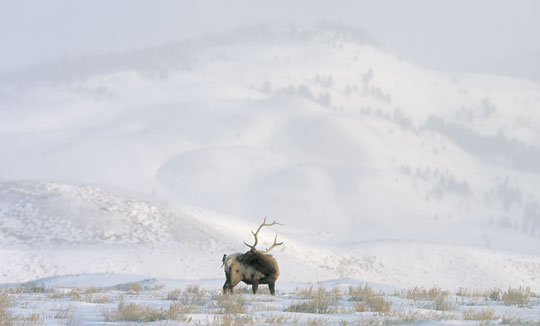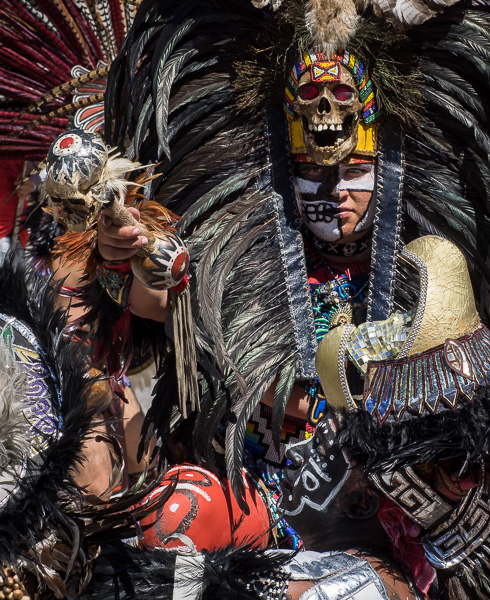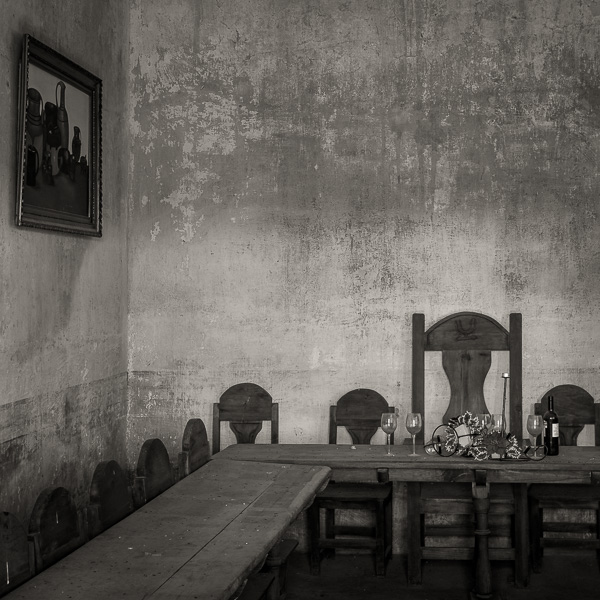
Buying a large and expensive lens is a lot like going out on a blind-date. Because dealers typically don’t stock them, and except for certain Nikon and Canon big-guns they are rarely available for rental, (I’m referring to lenses‚ not blind-dates), buying a super-telephoto is usually done based solely on reputation and faith. And, as with a blind-date, sometimes you go home with a smile on your face and sometimes you can’t wait for it to end.
In the Fall of 2001 I had purchased a600mm f/4lens for myPentax 67II. Though I liked the lens, and I found that it produced very nice results (once I learned how to deal with its inherent chromaticaberration), in the end it simply turned out to be too big and too heavy for realistic use in the field. I like a challenge, but middle age and a chronic bad back made this monster lens a bit more of a challenge that I was willing to assume on a regular basis.
I had bought the lens used on E-Bay at a good price, and was able to sell it without taking a loss, so I was left somewhat wiser but at least no poorer. This still left a hole though in my medium format arsenal. I needed a relatively long, fast and super-sharp lens for wildlife work.
This time I decided that I really needed a state-of-the-art lens that had a number of features that the 600mm had lacked‚ auto diaphragm, a rotating tripod collar, and most importantly, low dispersion glass. But, it still needed to be of manageable size and weight.
A look though the Pentax catalog showed that there was really only one lens that would, in theory at least, meet my needs ‚theSMC Pentax-M*67 400mm f/4 ED(IF), to give it its full official name.
The Specs
Minimum Aperture:
45
Lens Construction:
9 groups 9 elements
Angle of View:
12
Diaphragm:
Fully Automatic (inner Bayonet Mount)
Minimum Focusing Distance:
2.8m (9.2 ft.)
Filter Size:
67mm (rear)
Lens Hood:
Built-in
Lens Case:
Exclusive Trunk Case
Maximum Diameter & Length:
132.5mm x 305mm (5.2" x 12.0")
Weight:
3,700g (130.5 oz.)
Catalog No.:
29415 SMCP-M* 67 400mm f/4 ED (IF) w/Trunk Case
But Can it Dance?
 Behindyou, Yellowstone, Feb. 2002
Behindyou, Yellowstone, Feb. 2002
Pentax 67II with Pentax 400mm f/4 ED(IF) lens on Provia 100F
At first glance this lens appeared to meet all of my criteria. It features the latest UD glass, for high-quality chromatic aberration-free images. It is of manageable weight and size (at least compared to the Pentax 600mm) and, as you’ll soon see, also features the latest in convenience and image enhancing capabilities.
The shocker was the cost‚ it has a street price of around US $6,000. (Harrysproshophas them for under $5,500 (in early 2002)). Fortunately, once again I found a used one on E-Bay at an attractive price. A smooth transaction with the seller and a few days later I was the owner of a pristine Pentax 400mm f/4 lens. But, a number of questions remained;
would it meet my needs in the field?
would it provide the performance I was looking for?
how would it compare optically to the 600mm f/4?
how would it perform with the Pentax 1.4X extender?
how would it perform against the Pentax 300mm f/4 ED(IF) that I already owned?
We’ll answer all of these questions, but firstly lets have a subjective look it the lens’ features.
Up Close & Personal
You can read specs and look at catalog photographs all you want, but it isn’t until a lens is in hand that you can really understand what makes it tick, and how it may work for you. Lenses have very distinct personalities. They are in fact, for me, the most exciting photographic component because they largely determine the "look" of an image. A camera is about features and convenience, but it essentially is a light-tight box with a shutter. A lens, on the other hand, has soul.
The Pentax 400mm impressed me from the start. It’s large and heavy, but not unmanageable. Whereas the Pentax 600mm needed to be mounted on the largeWimberleygimbal mount, in a pinch the Pentax 400mm can even be used directly on a large ballhead, though theWimberley Sidekickwill work best for wildlife work.
Front Filters
Starting at the business end, the front element, you’ll find it to be 112mm in size. Interestingly there are filters this big available, and in fact my lens came from its previous owner with aHeliopanUV filter. Expensive, and I wouldn’t have gone out of my way to purchase one, but nice to know it’s available for working in salt spray, snowy or other foul weather conditions.
Lens Hood
The lens hood is built it and very nicely designed. When slid back for storage it screws down with a twist so that it will not slide forward inadvertently, and when slid forward for use it similarly tightens with a twist so that it will not accidentally retract. Excellent design. A lined leather lens cap, de rigueur with large-aperture long lenses these days, is also provided.
Pre-Set Focus Stop
Just forward of the focusing ring is a narrow rotating ring with a thumb screw. Its purpose is to act as a focus-point pre-set. Focus the lens at a specific distance and then set the ring. You can now focus the lens to that distance and the lens will "click" into the preset point. It can still be manually focused past this point, but even with gloves on the detent created at this point can easily be felt.
Like most long lenses the Pentax 400mm focuses "past infinity". This is to accommodate expansion and contraction of the lens due to changing temperatures. In fact this lens shows the infinity marker asa range, rather than a single point. (Rear-mounted filters can also change the focus point). With the lens’ preset feature I find it convenient to use it to set infinity for current temperature conditions, and thus can easily and quickly focus the lens on a distant point.
Focusing Ring
The focusing ring is very wide and rubberized. As indicated by the (IF) part of the lens’ designation this is aInternalFocusinglens, which means that the lens does not change length as focus is changed, and the external front element does not rotate.
Sling Mounts
Just behind the focusing ring are two strap mounts, 180 degrees apart. A shoulder strap is provided with the lens.
Tripod Mount
A removable rotating tripod mount is provided. Its size is reassuring, and it has click-stops at 45 degree increments.
Internal Filter Holder
As do most current super-telephoto lenses, the Pentax 400mm has an internal filter holder. It takes standard 67mm filters. If you set the correct angle before inserting it a polarizer can be used. Be aware that an internal filter will change the infinity point and thus refocusing will be required if a filter is inserted after initial focusing.
Aperture Ring
The aperture ring is normal, with half stops as well as full stop settings, except between f/4 and f/5.6 and between f/32 and f/45, the smallest stop, where there are only full stop detents.
Fit & Finish
When examined indoors the lens has a cream-coloured finish overall, with dark gray control rings. Attractive, in the Canon idiom, and appropriately coloured for a large lens, with the reasoning being that a light finish reduces the effect of heating within the lens on a sunny day. (Even Nikon has now taken to making beige lenses).
But outdoors in bright sunlight the cream colour becomes a light fluorescent yellowish-green. Not really ugly, just weird. What was Pentax thinking of?
Lens Mount
The mount is Pentax’s internal bayonet. This is much preferable to the awkward external bayonet used by larger lenses like the 600mm.
The Case
The lens ships in a high-quality fitted aluminum case. This is fine, except that it has the namePentaxembossed in large red letters, as well as the full model designationSMC Pentax-M*67 400mm f/4 ED(IF)printed in 40 point type on top of the case. This makes the case suitable for storage, but if they had printed "Steal Me, I’m an Expensive Lens",it could not be more obvious what’s inside.
In the Field
After some initial testing my first major shoot with the 400mm f/4 was a very challenging one‚ wildlife inYellowstonein winter, shooting from snowmobiles.
 Bald Eagle and Branches, Yellowstone. Feb. 2002
Bald Eagle and Branches, Yellowstone. Feb. 2002
Pentax 645NII with Pentax (67) 400mm f/4 ED(IF) with 1.4X Extender lens on Provia 100F
The lens acquitted itself very well indeed. It is just light enough and small enough (though it’s neither particularly light, nor small) to fit in a backpack style bag and to be used on location. I found all of its convenience features, such as the internal filter holder and settable focus point lock to be of value in the field.
The lens is very sharp, has high inherent contrast, and works well with the 1.2X Pentax Extender. I did find that at shutter speeds in the 1/8th second to 1/60th second range there was noticeable shutter bounce when used with the Pentax 67II. There was none visible though when used with the Pentax 645NII.
In the end, switching from the 600mm to the 400mm lens was a sound decision. On more than one occasion during my Yellowstone shoot I remarked that if I’d been using the 600mm I would either not have gotten the shot, or would have thrown my back out in trying.
By Comparison
I rhetorically asked several questions at the beginning of this review regarding how this lens would compare with others, in particular the 600mm f/4 and the 300mm f/4 ED(IF) with 1.4 Extender. I’ve done some extensive testing andhere are the results.
Read this story and all the best stories on The Luminous Landscape
The author has made this story available to Luminous Landscape members only. Upgrade to get instant access to this story and other benefits available only to members.
Why choose us?
Luminous-Landscape is a membership site. Our website contains over 5300 articles on almost every topic, camera, lens and printer you can imagine. Our membership model is simple, just $2 a month ($24.00 USD a year). This $24 gains you access to a wealth of information including all our past and future video tutorials on such topics as Lightroom, Capture One, Printing, file management and dozens of interviews and travel videos.
- New Articles every few days
- All original content found nowhere else on the web
- No Pop Up Google Sense ads – Our advertisers are photo related
- Download/stream video to any device
- NEW videos monthly
- Top well-known photographer contributors
- Posts from industry leaders
- Speciality Photography Workshops
- Mobile device scalable
- Exclusive video interviews
- Special vendor offers for members
- Hands On Product reviews
- FREE – User Forum. One of the most read user forums on the internet
- Access to our community Buy and Sell pages; for members only.














